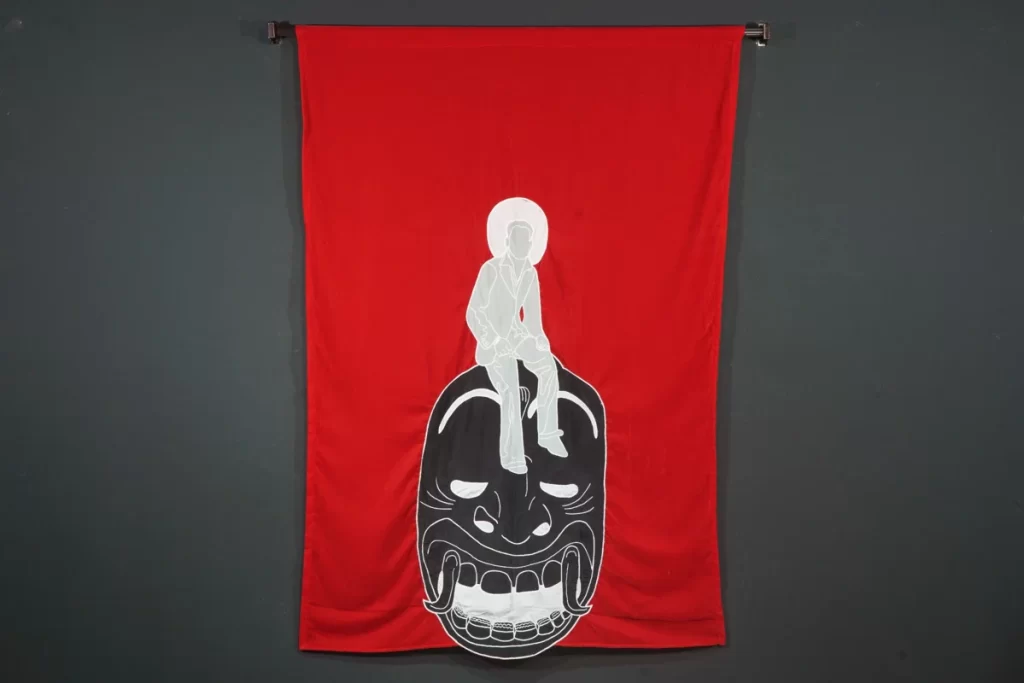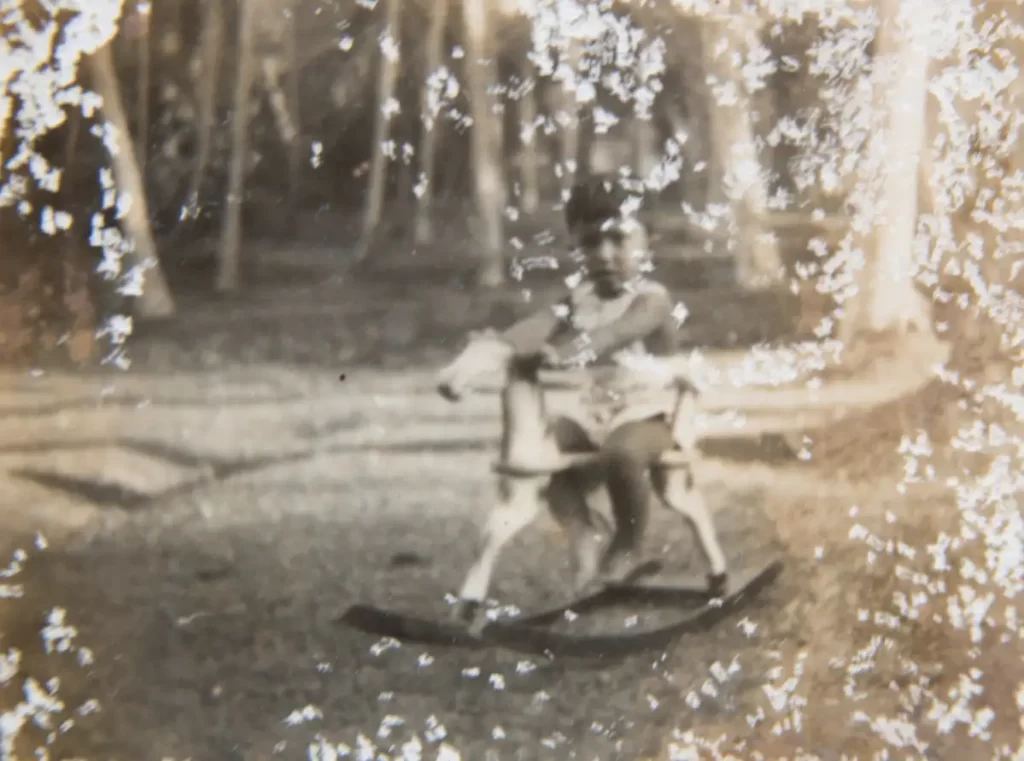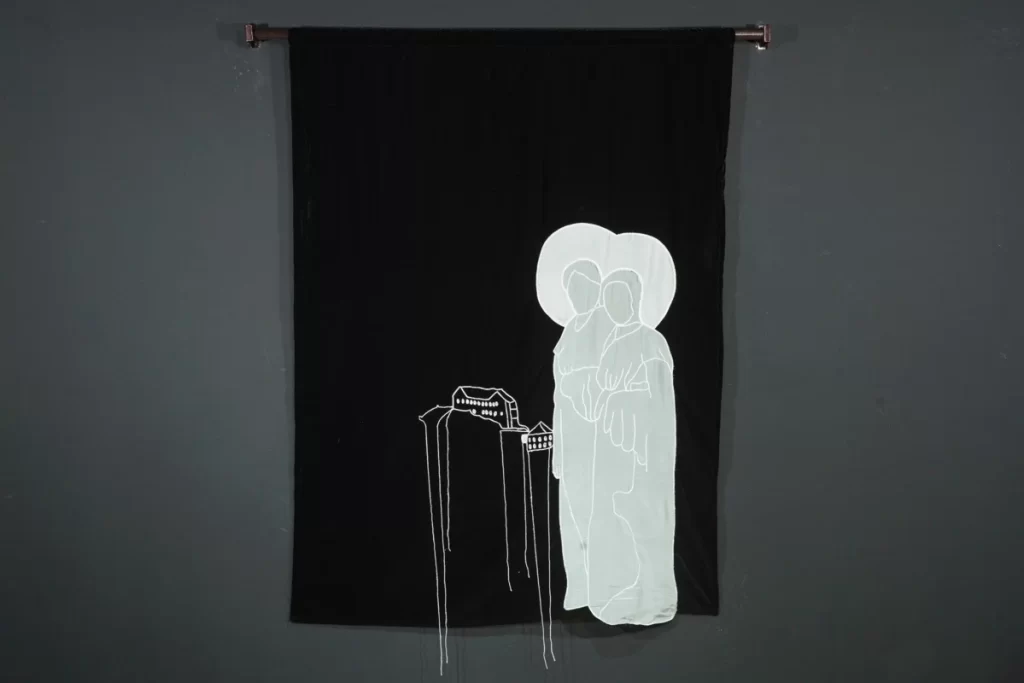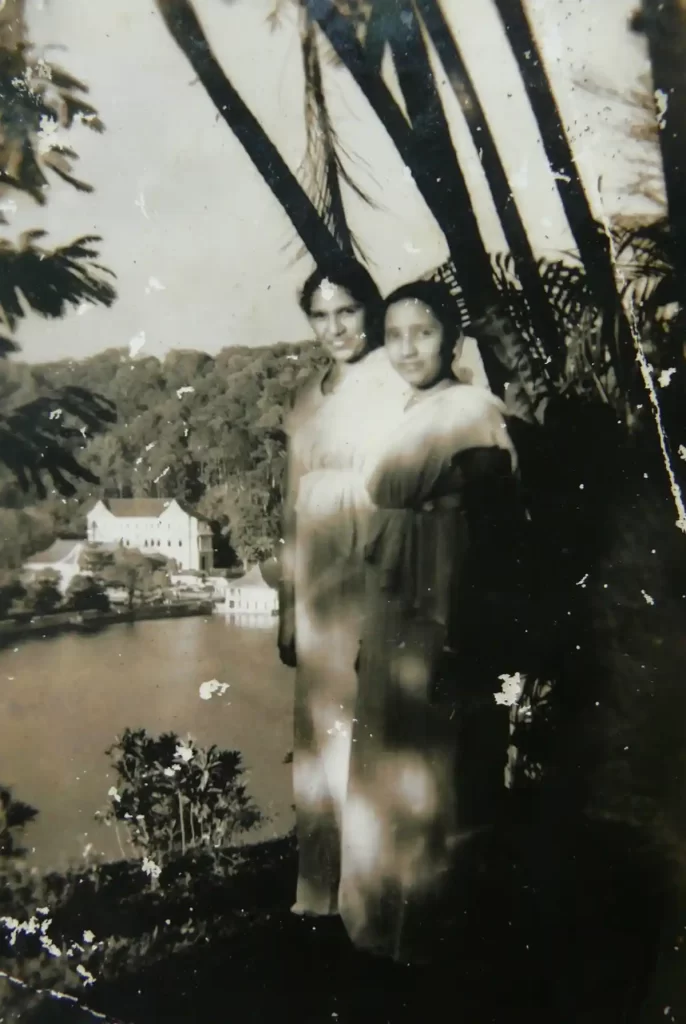Kalkariti Art Gallery X Austrian Cultural Forum
Kalakriti Art Gallery in collaboration with the Austrian Cultural Forum is set to premier a large-scale solo exhibition by the Austrian Sri Lankan artist Raki Nikahetiya in Hyderabad, with a presentation of textile, embroidery and marble in-lay works on the themes of migration, integration, memory and cultural belonging. The exhibition, titled ‘Migrant Memory,’ will open with a private preview on 30 November 2024. It will run until 05 January 2025.

H.E. Katharina Wieser, Ambassador of the Republic of Austria to India, Bangladesh, Bhutan, Maldives, Nepal & Sri Lanka, will inaugurate the exhibition. The evening will also feature a dramatized reading of prose and poetry by The Little Theatre Hyderabad, curated around the themes of Raki Nikahetiya’s art: immigration, emigration, and memory.
What is Raki Nikahetiya’s ‘Migrant Memory’ All About?
Human history is shaped by migration. It has been an age-old response to circumstances that compel us to seek new horizons, whether driven by hope, necessity, or survival. Migration embodies resilience, as individuals and communities navigate the duality of holding on to their roots while embracing the new, defining their evolving sense of belonging. Yet, migration often comes at a cost, altering lives in a deeply personal way, beyond physical displacement. The casualties of war are often measured through statistics and numbers—lives lost, territories affected, and destruction of property. What is not accounted for are the countless lives altered, the countless memories that are fragmented, and the countless people who are separated from their homeland due to forces beyond their control. This is the idea behind ‘Migrant Memory.’

Raki Nikahetiya’s work tells one such story, capturing the impacts of migration on one’s memory and identity. His art speaks to the profound impact of his family’s migration, spurred by the Sri Lankan civil war that raged from the 1980s to 2009. The act of leaving his homeland was marked by an indelible memory—boarding a plane and staring at an air safety card that both unnerved and comforted him. These cards, detailing possible calamities and safety protocols, became symbols of a crucial moment of departure and arrival—a bridge between the life he knew and the unknown that awaited. This is reflected in his series ‘Brace! Brace!’.

Arriving in Austria brought the challenges of adapting to an unfamiliar culture and language. Yet, amidst this struggle, he found kinship in those who welcomed him, teaching him new words, introducing him to their world, and making him feel at home in a foreign land. These relationships were anchors in his journey. But no matter how far one ventures, homeland and family are parts of one’s identity that withstand time and distance. Stories from home were almost exotic against the mundane realities of immigrant life. Raki Nikahetiya’s oeuvre embodies this duality—the longing for home and the resilience found in new beginnings. In his ‘Another Life’ series, associated objects become symbols of relationships, connecting past and present and revealing unspoken stories.

His interdisciplinary approach to art allows him to express himself through diverse mediums, often collaborating with artisans and communities. For ‘Migrant Memory,’ he has worked closely with embroidery master artisan Reyas Ali and his team in Kolkata, as well as with pietra dura master artisans in Agra. His tokens of memory form the imagery of his works, drawing from ancestral photographs, souvenirs, nostalgia and pop culture.

‘Migrant Memory’ explores how memories intertwine with identity – that not only connect us to our past but also propel us forward. Raki Nikahetiya’s work is a celebration of resilience, belonging, and experiences that carry us forward.

About Raki Nikahetiya
Born in Sri Lanka in 1983, Raki Nikahetiya and his parents left the country during times of civil war. They moved to Austria, and reality ruptured between two cultural poles. He studied Economics in Vienna and started working as a photojournalist, before joining the United Nations in 2009. After a five-year posting and a cache of experience in international development work, he moved to London. He continued his engagement in trade development and environmental conservation in Asia and Africa before fully focussing on his art practice. Now working and traversing between New Delhi, London, Vienna and Colombo, Raki focuses on interdisciplinary exploration. Self-taught in documentary photography he started his interdisciplinary path after completing a foundation course at the Slade School of Fine Art in London. As an artist with a migrant background, the documentary aspect focused on individual as well as collective heritage, culture and identity.

Today his interdisciplinary work pushes this further through the use of photographic negatives, traditional and digital painting, use of artisanal handwork, land art as well and scientific processes. Raki is interested in the interdisciplinary approach as a tool to depict the interconnectivity of things and the interdependency between different realms – to question our understanding of self and what we accept as reality. Raki is the co-founder of sā, the highest land art Biennale in Asia.
Image Courtesy – Kalakriti Art Gallery
Contributor





